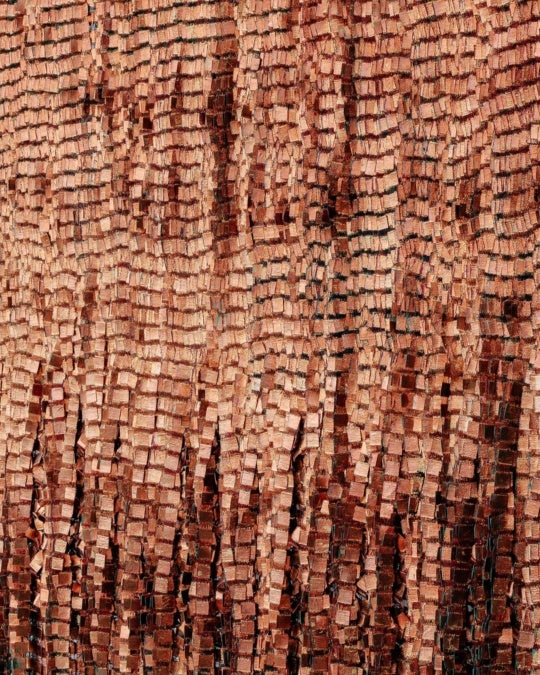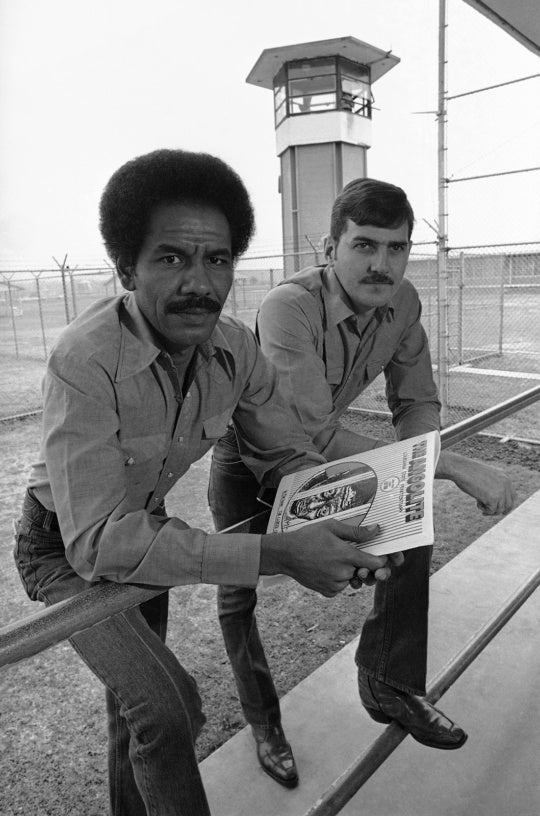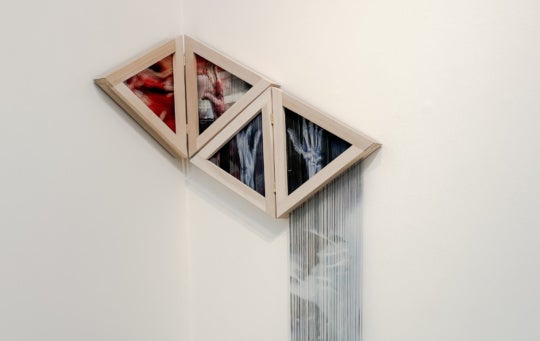
InKyoung Chun is an Atlanta-based painter. Her first solo exhibitionbowl, home, energy, culture, corner, table, earth, space, embrace, everythingis currently on view at {Poem88}. Chun is a recent MFA graduate of Georgia State University’s Welch School of Art and Design and is currently a WonderRoot Walthall Fellow. She is also the 2013-2014 recipient of the Emerging Artist Award from the City of Atlanta Office of Cultural Affairs.
I visited Chun in her Goat Farm studio to discuss her working process and her transition from school into a professional career.
Lilly Lampe: How long have you had a studio at the Goat Farm?
InKyoung Chun: Maybe four or five months, I cant remember exactly.
LL: You recently graduated from GSUs MFA program and had a studio there. Was it important for you to go from having the studio at GSU to having another studio space separate from your home?
IKC: I felt it was important to get another studio immediately because in that transitional momentgraduating from the MFA program to trying to be more professionalI was looking for studios but prices were pretty expensive. I was moving my stuff out of my [GSU] studio and then I heard Jiha Moon was moving into the Goat Farm, which was a trigger. Shes my friend and a great artist so her really stimulating presence was a big draw. I moved in at almost the same time that she did.

LL: Was it important that you have a studio near Jihas?Â
(Theyre in the same building and down the hall from each other at the Goat Farm)
IKC: For me, its a huge benefit.
LL: Do you visit each other studios often?
IKC: Not very often; we get to meet in the hall on breaks. She is teaching at Agnes Scott and I am teaching as a part-time instructor at GSU, so our teaching and studio schedules are different. When I was busy preparing for my solo exhibition, sometimes I would avoid her, and she too during her busy studio time [laughs], but yeah we get together.
LL: Was part of your reason for getting a studio near Jihas to recreate the sense of community you had during your time at the GSU MFA studios?
IKC: Yes. It was a very fun community. The sixth floor at GSU is the painting studios; we shared two to a studio so its very physical, very exciting sometimes we struggled with sharing the space but it was very intimate too.

LL: What do you think are some of the benefits of being in a space where there are a lot of artists working?
IKC: Its exciting. Right across from my studio is Straw Hat Press. Theyre such nice people. And next to my studio, beyond this wall [gestures] is a play company. Sometimes they practice really loudly. It can be annoying, but also great. Ill have to turn up my music because their voices vibrate, but its exciting. I get a lot of great energy from them.
LL: Lets talk about your practice. I noticed your solo show at {Poem 88} includes a lot of paintings that are based from sets that youve created, like the set with the dollhouse. Has your practice always involved working from something youve constructed, or a still life, or do you work from imagination too?
IKC: A combination. With those drawings, Im just starting randomly. The idea is creating energy. Sometimes I begin by creating abstract forms that I later modify. Ill layer bubble forms representing ki, the invisible energy flow in Asia. Ki represents the power of living and non-living things. In my work, this energy is visualized as colorful bubbles. The colors signify saekdong, the Korean traditional color strips which chase out evil spirits and bring blessings.
I came to the United States in 1990. It was not easy to survive as an immigrant. At the moment I was purely a housewife and felt very isolated. Painting was a great tool to communicate because I can express more in that medium than formal language. I depict American houses, but the symbolism within is a combination of Korean and American. Symbolically, I live in an American house but the inside is very different. We take off our shoes, inside and everythingeven eating at the table, the culture is so different. We eat a lot of Korean food.
Michael Rooks visited our studios [at GSU] and saw this dollhouse and said he was really excited by this house and suggested I start painting it. So that led to my very first dollhouse painting.

LL: When did this happen?
IKC: In the end of the second year of the MFA; its a three-year program.
LL: So in every situation that youve been in, being a part of a studio group has made a lot of really good studio visits happen for you.
IKC: Yes, a lot of great people showed up. GSU really promotes the MFA program; Im very grateful.
LL: How many dollhouses do you have?
IKC: I just have this one, but am making another one for a MOCA GA show in April for the Walthall Fellows Program. Its a new WonderRoot program. 11 artists were selected for the one-year fellowship. We meet twice a month. One meeting is a seminar, based on reading articles and sharing ideas. The other meeting, usually on a Saturday, features lectures from people such as Cinque Hicks, Michael Rooks, Joey Orr to help us connect to the more professional art world. To get the fellowship right after graduating from the MFA program was really nice.
LL: How has the WonderRoot fellowship influenced your practice?
IKC: Theres a mentorship as part of the program. Each artist is paired; my mentor is Seana Reilly. Shes such a wonderful person. Some artists dont share opportunities like available grants, but she is very generous.
Out of the 11 fellows: two are dancers, two work in video, two are photographers. Only Bethany Collins and I are drawers and painters, and the others are writers. The whole atmosphere is about being creative and experimental. Our backgrounds are so different, which is really exciting.Â
LL: It sounds like an environment in which you call can learn from each other without being competitive.
IKC: Yes. And the speakers have been very interesting. Some are activists, which is very inspiring. Ive been in school, which is a very academic environment, and have been so focused on drawing and painting and visual art, but here its more like the broader art community. I think its really important as a beginning artist to know whats going on, and what others are thinking.

LL: I have a few more questions about the work. What gave you the idea to begin bringing the dollhouses into your studio?
IKC: Joe Peragine and Nancy Floyd, two of my professors at GSU, lead a seminar together one semester and took students to the Wieland Collection. The collection focuses on houses and I was so moved by them. I was already painting houses. I become nostalgic when I look back on my life in Korea. When I paint Korean scenes, I get to relive the experiences again, which is soothing for me. So I was painting Korean traditional houses and towns and when I saw that collection it inspired me to make something too and I thought, how can I build a house?
My daughter has a dollhouse and I thought, as an adult, I can have one too! So I went to the flea market
LL: You didnt take your daughters dollhouse but bought your own?
IKC: The design wasnt perfect. I might work with it later, but I bought a new one.
LL: Has it been different for you to work from these houses as objects rather than working from your memory of Korean houses?
IKC: There arent so many differences. I start by taking photographs of these dollhouses and insert them into my Korean village paintings, often using Photoshop. I insert the dollhouse and a picture of the inside and insert inside another image of my real house and keep layering. Then I fill the home with bubbles to represent the ki. The ki flows inside and outside of the home, representing strength, shelter, and a place of rest and recovery.




